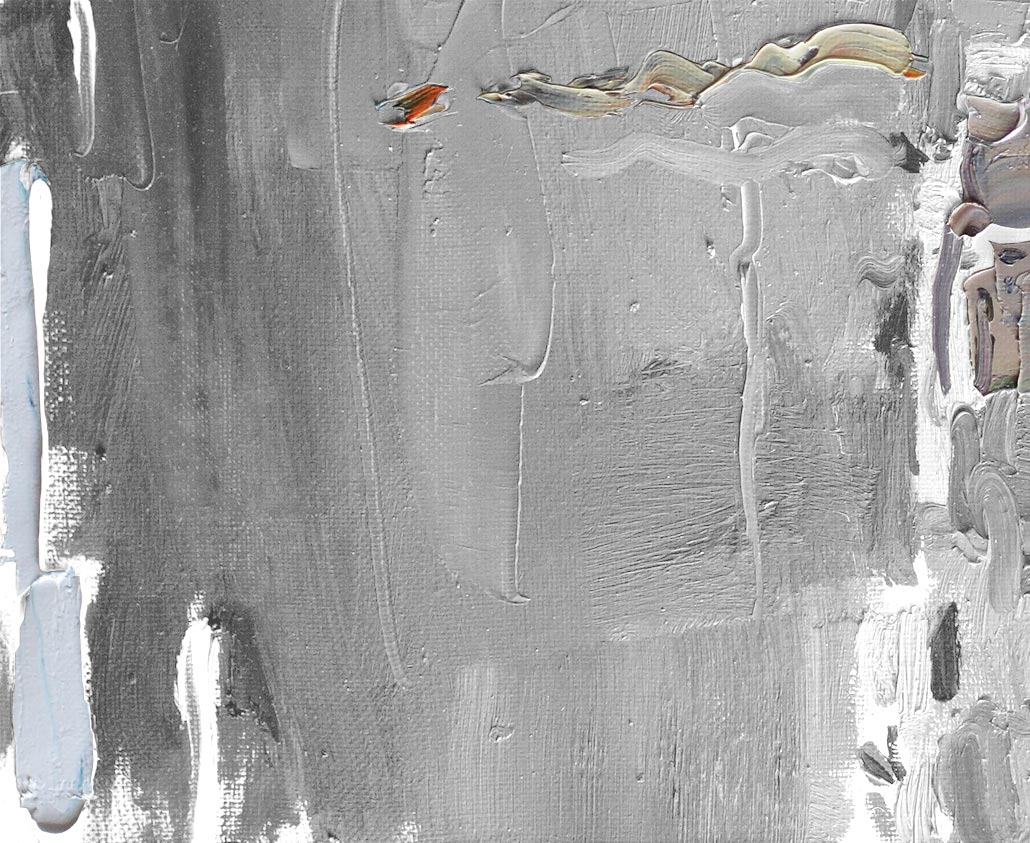


Like the American artist Walter Murch, active in the 1950s and 60s, Eduard Anikonov is a "painter's painter," in that his work has as much to do with light and shadow, color and texture, and the tactile qualities of oil paint applied to canvas as with the subjects that he depicts. But while Murch often included discarded machine parts in tabletop settings for his medium-size easel paintings, Anikonov works on a grander scale and most often depicts larger sections of machines that are still active in his "Industrial Landscape" series.
Although his paintings have the power and impact, as well as the vigorous brushwork, of Abstract Expressionism, they also partake of considerable detail, with the cogs and gears and other parts of the whole lovingly depicted in a manner that lends an unusual sensuality to their unyielding surfaces. Indeed, when the artist says "For me, painting is a possibility of verbalization of personal emotional feelings and personal sensual 'history,'" the statement seems borne out by the manner in which his brush caresses these surfaces and imbues them with an almost flesh-like sentience. And when he speaks of "the manifestation of the spiritual in the material," Ray Bradbury's famous phrase "the soul of a new machine" springs most immediately to mind - even though the machines that Anikonov chooses to paint arc more likely to be old machines stained by grease and rust and made all the more soulful for it.
These monolithic machines stand before us in all their grubby glory with the dignity of old, overworked circus elephants lined up in their stalls under the big top. Anikonov delineates the play of light and shadow over their metal hides in a manner that recalls the chiaroscuro in a landscape by Corot. In "Gear 1," the vigorously scumbled fiery red area on the left: side of the composition projects a sense of heat.
The machine is relegated to the right side of the canvas, its begrimed and shadowed face, barnacled with rivets, suggesting that of a stunned robot.
Both "Gear 2" and "Gear 3" partake of a more mellow palette of subdued tones, the former canvas especially reminiscent of the gravy browns of old master portraits.
Indeed, each of Anikonov's closeup paintings of machines suggests a sympathetic portrait, while his busier factory views in the "Industrial Landscape" series, with their scaffolds and trestles and cacophony of brighter reds and blues, evoke a world of noise, tumult, and smoke in which one can almost hear the hiss of steam and shrill shriek of whistles signaling intervals in the hectic hustle and bustle of the workday.
Like Philip Levine the present Poet Laureate of the United States, best known for his poems about ordinary people in working - class Detroit, Anikonov dignifies the world of labor in his art. And while more of his paintings may focus on the machines at which they toil, he also pays homage to the workers themselves, in "Thirst," a portrait of a man with the hair under his welding helmut stuck to his forehead with sweat, as he greedily quaffs a glass of water in the hellish red glow of a foundry.
As his paintings demonstrate so beautifully, Eduard Anikonov is a man who obviously knows, to quote the tide of a book by Philip Levine, "What Work Is."
- Byron Coleman